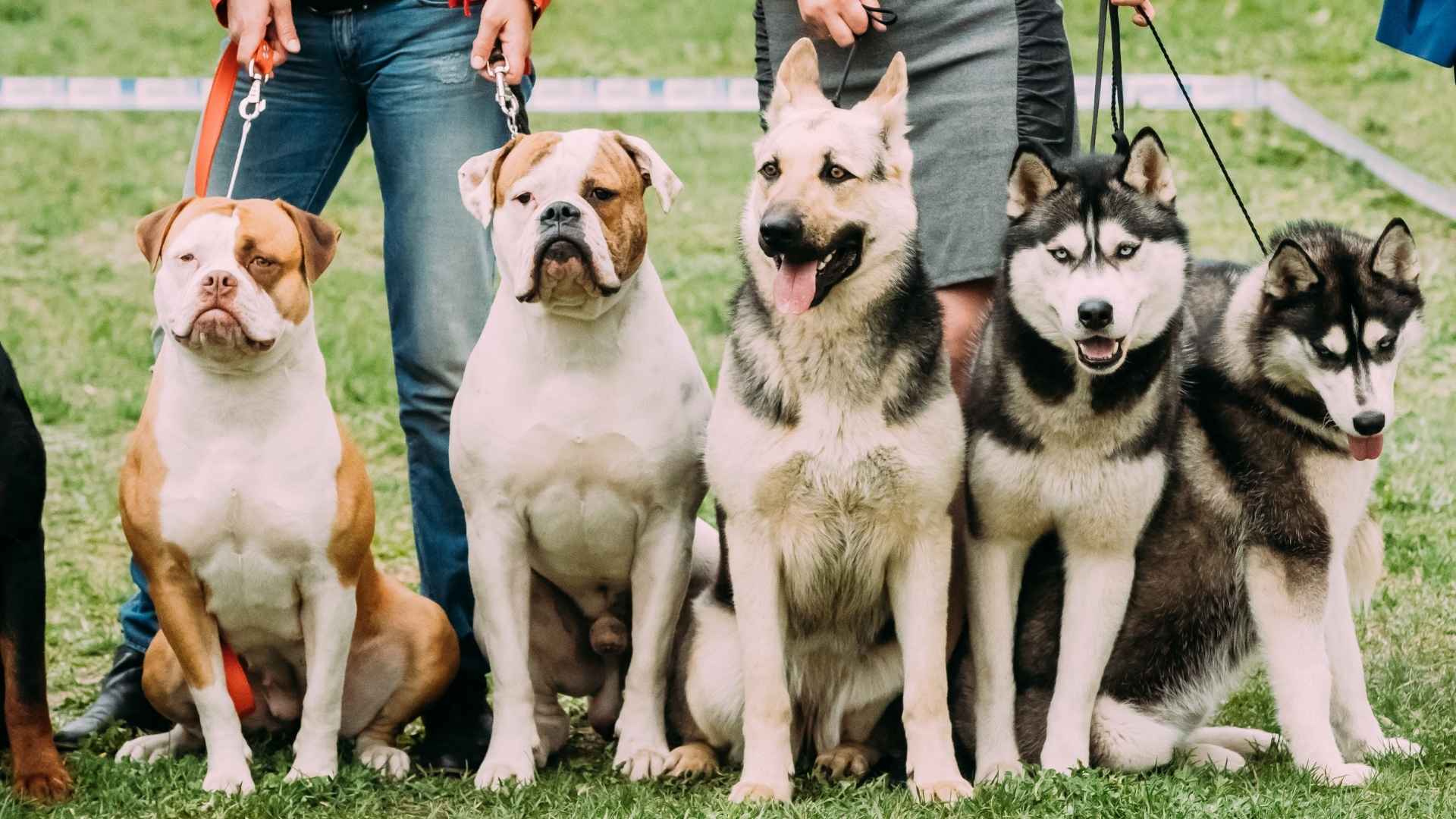Did you know that some of the most loyal, loving, and even gentle dog breeds are banned in parts of the U.S.? While most people assume that only aggressive dogs face restrictions, the truth is far more complicated. From the majestic Great Pyrenees to the powerful Rottweiler, many breeds have been banned due to a mix of safety concerns, past incidents, and even myths.
But are these bans truly justified, or are they unfairly labeling certain breeds as dangerous?
In this article, we’ll explore the 9 dog breeds that are banned in parts of the U.S., the real reasons behind these laws, and whether these dogs deserve their “dangerous” reputation.
Dog Breeds That Are Banned In The US
1. Great Pyrenees
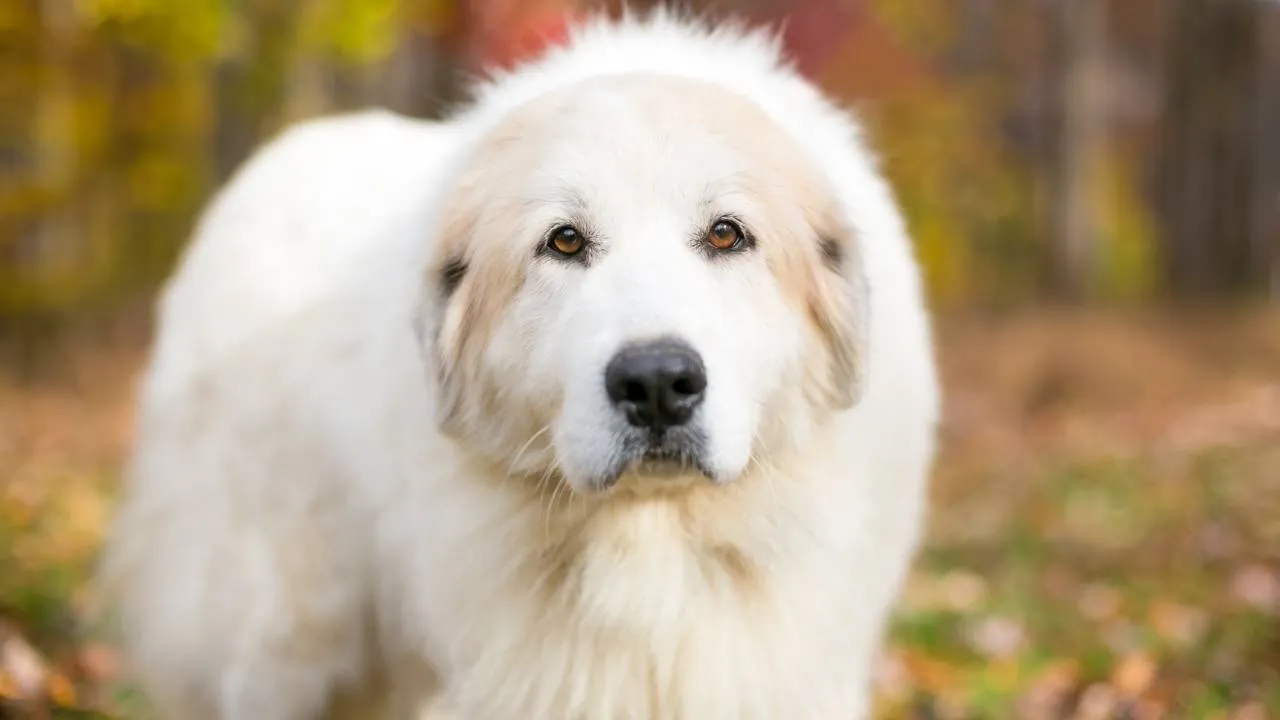
The Great Pyrenees has a long history as a guardian dog, originally bred to protect livestock in the Pyrenees Mountains. Known for their loyalty and bravery, they have worked alongside shepherds for centuries. Their strong guarding instincts remain, making them both protective and affectionate.
With a massive build and a thick white coat, the Great Pyrenees stand out. They can weigh over 100 pounds, with a muscular frame built for endurance. Their deep bark and imposing presence make them natural watchdogs. Despite their size, they move with surprising grace.
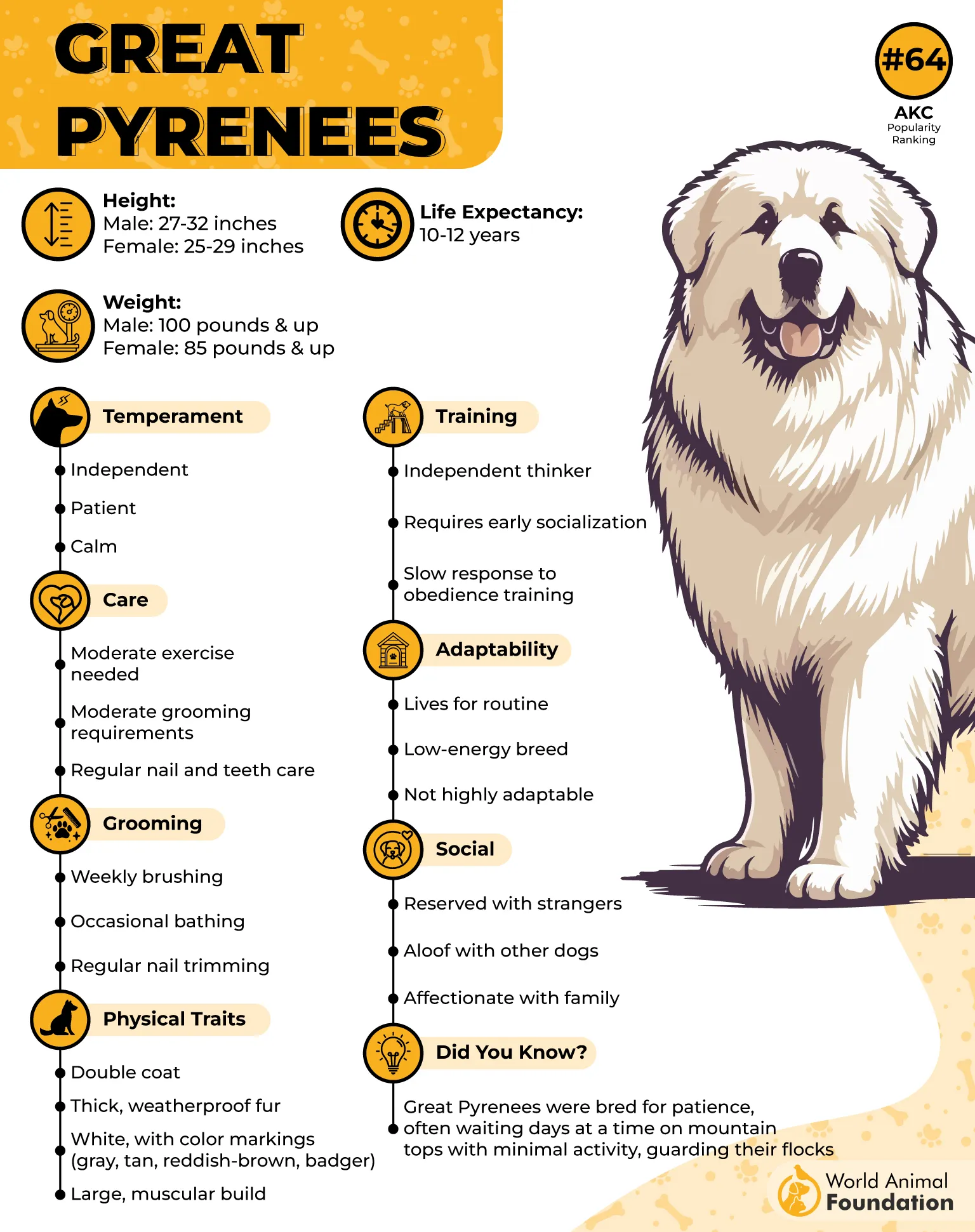
These dogs are gentle yet independent, forming strong family bonds while maintaining a watchful nature as mentioned in PetMD. While affectionate, they can be wary of strangers. Unlike certain dog breeds, they don’t demand constant attention but prefer observing their surroundings.
Breed-specific legislation has banned them in some U.S. states due to dog bites and concerns over their protective nature. Their strength and guarding instincts, if not properly trained, can lead to aggressive behavior. Poor handling, rather than the breed itself, is often the real issue.
Supporters argue that responsible ownership prevents problems, while critics believe restrictions are necessary. Instead of bans, experts suggest strict regulations to ensure only experienced owners handle this powerful yet loyal breed.
2. Staffordshire Bull Terrier
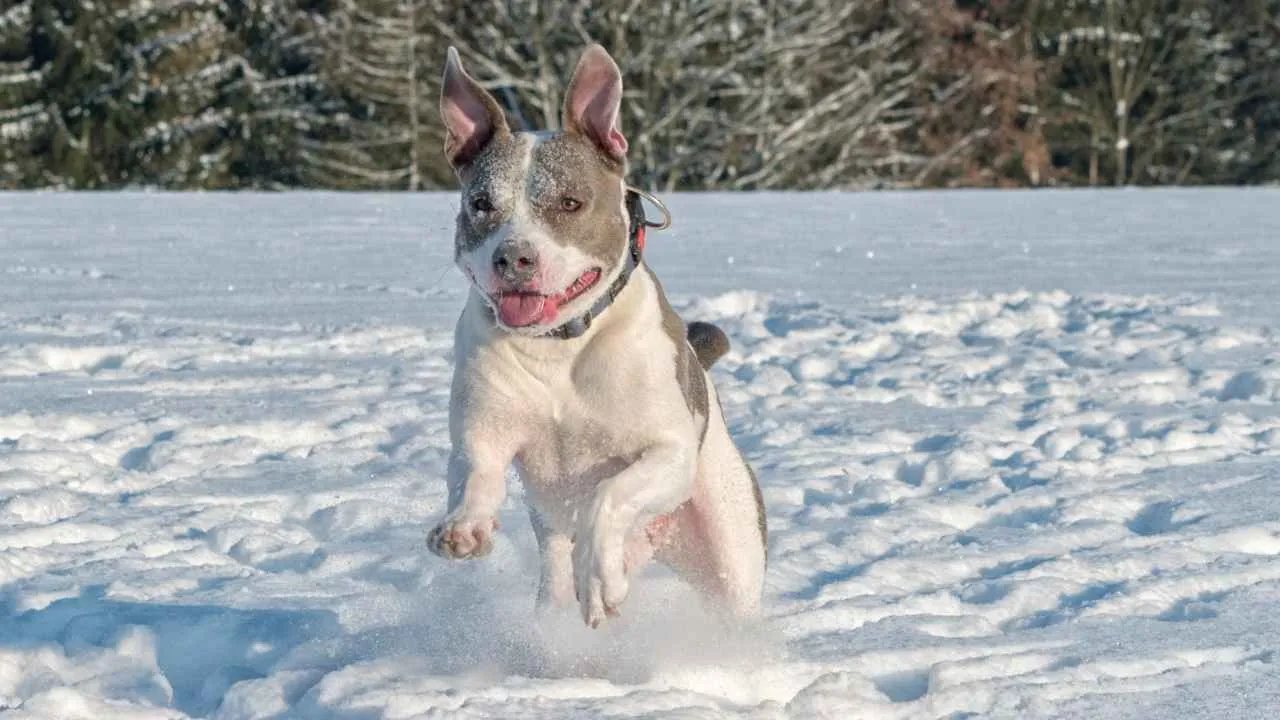
The Staffordshire Bull Terrier has a bold past, tracing back to 19th-century England, where it was bred for bull-baiting. Over time, this fierce competitor transformed into a loving family dog. Known for its bravery and devotion, it quickly became a favorite among dog enthusiasts.
With a compact, muscular build, this breed is all about strength in a small package. Weighing up to 40 pounds, they have broad heads, powerful jaws, and a sleek coat. Though smaller than American Staffordshire Terriers, they’re just as strong and energetic, always ready for playtime.
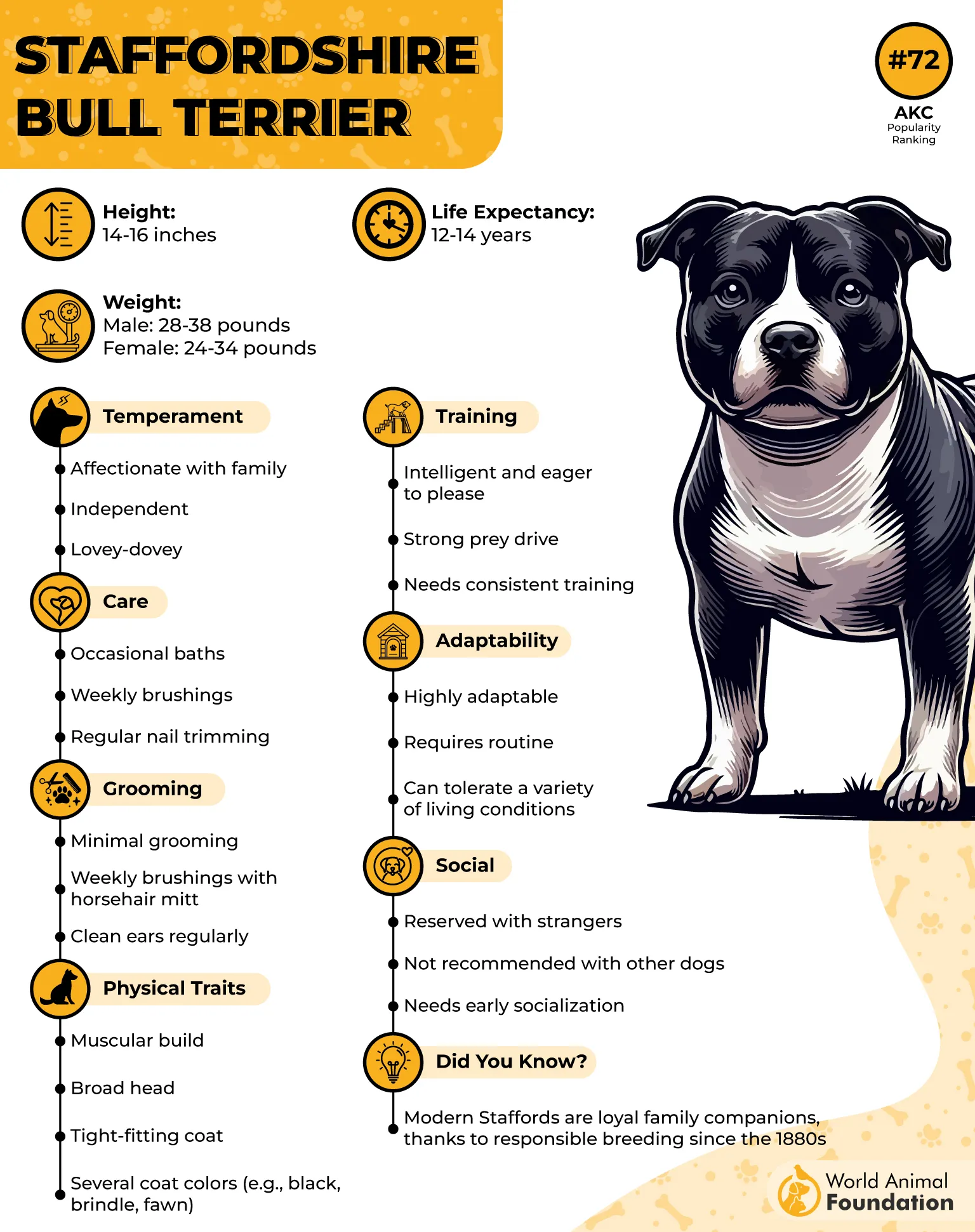
Despite their tough looks, they’re affectionate companions who adore human interaction. These dogs thrive on attention and form deep bonds with their families. Their playful nature makes them excellent pets, but early training is essential to manage their boundless enthusiasm.
Sadly, breed-specific laws have banned them in certain areas due to concerns over aggression. Reports of fatal dog attacks have fueled fear, though poor training is often the real cause. Their strength and determination require responsible ownership to prevent behavioral issues.
The controversy around restricted dog breeds continues to spark debate. While some see bans as necessary, others argue for stricter regulations instead. Many believe that with proper training and socialization, these loyal dogs deserve a chance to shine.
3. English Bull Terrier

The English Bull Terrier is as unique as they come, with a history dating back to 19th-century England. Originally bred for blood sports, these dogs later found their true calling as loyal companions. Their playful nature and boundless energy make them a favorite among devoted dog owners.
With a muscular build and a distinctive egg-shaped head, they are impossible to mistake for any other breed. Their strong jaws and sturdy frame give them a powerful presence. Despite their toughness, their goofy expressions and bouncy energy make them charming in every way.
Underneath that tough exterior lies a mischievous, fun-loving personality. They are social butterflies, always ready for adventure and play. While they are affectionate, their high energy and stubborn streak mean they need patient training and a firm but loving hand.
Unfortunately, banned dog breed lists often include them due to concerns over aggression. Labeled unfairly as dangerous dogs, they face breed restrictions in several states. Their strong-willed nature requires experienced owners who can provide proper guidance and training.
Some argue that their ban is necessary, while others believe responsible ownership is key. Many experts stress that behavior depends more on upbringing than breed, making education and training the best solution instead of restrictions.
4. Bull Mastiff
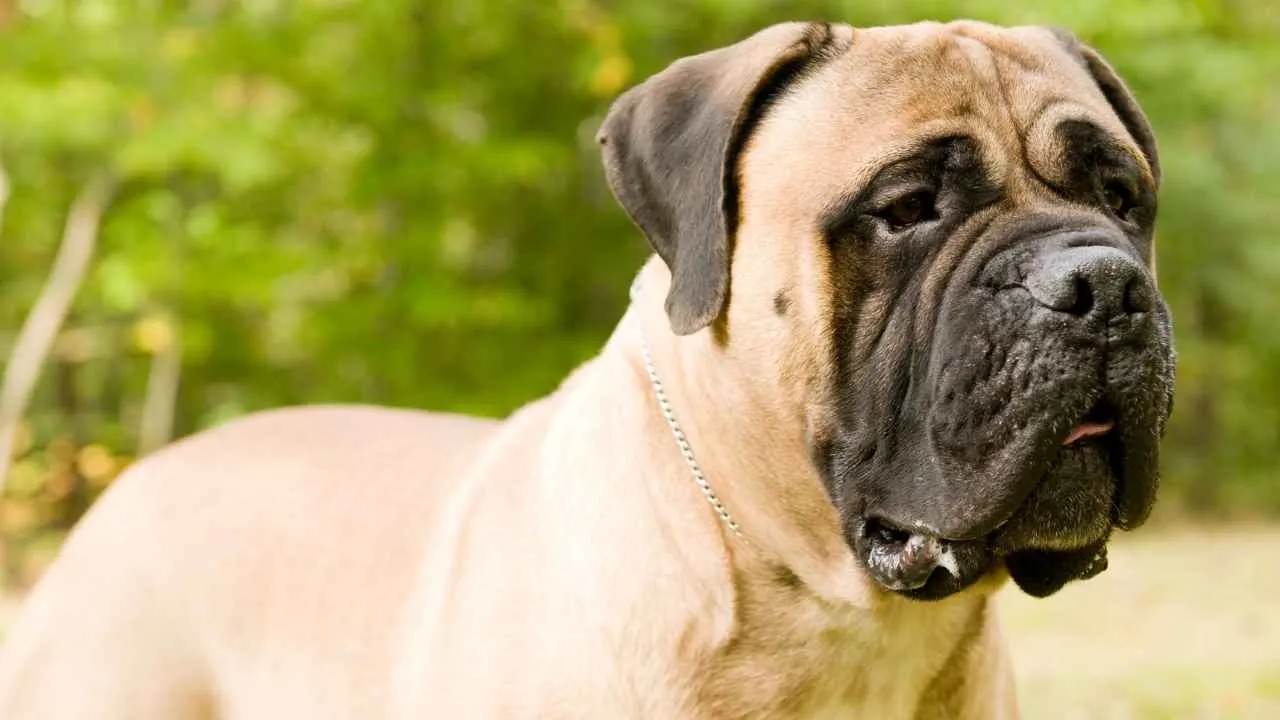
The Bull Mastiff was originally bred in 19th-century England to guard estates and catch poachers. With a perfect mix of strength and loyalty, they quickly became the ultimate protectors. Over time, they transitioned from estate guardians to beloved family dogs known for their unwavering devotion.
These giants weigh up to 130 pounds and boast a muscular frame built for power. Their broad chests, wrinkled faces, and short coats give them a striking presence. Despite their intimidating size, they’re known for their calm and confident demeanor—unless, of course, they sense a threat.
According to AKC, beneath their tough exterior, they’re affectionate and deeply bonded to their families. Unlike some specific breeds, they don’t bark excessively but will stand their ground when needed. While gentle with loved ones, their protective instincts require consistent training and socialization.
Unfortunately, their strength has landed them on banned breed lists in certain areas. Concerns about them being vicious dogs have led to restrictions under local laws. Incidents involving poorly trained dogs have fueled fears, prompting animal control measures in multiple states.
Supporters argue that banning them isn’t the answer, while officials insist that restrictions enhance public safety. Many believe responsible ownership, not breed discrimination, is the key to keeping communities safe while allowing these loyal guardians to thrive.
5. Rottweiler
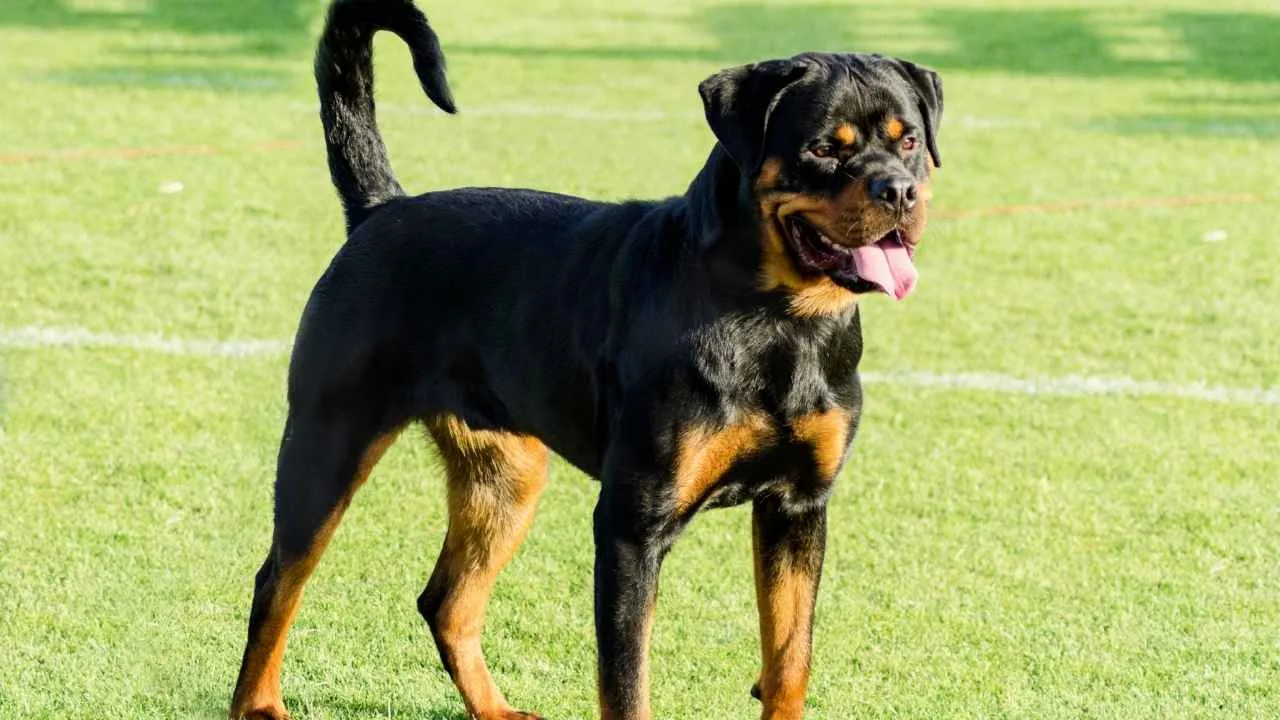
The Rottweiler traces its roots back to ancient Rome, where they herded cattle and protected soldiers. Later, they became indispensable in Germany, guarding property and pulling carts for butchers. Their intelligence and loyalty cemented their reputation as top-tier working dogs.
With a muscular build and a signature black-and-tan coat, they exude both power and elegance. Their strong jaws and broad chests give them an imposing look, but their expressive eyes reveal a softer side. Despite their size, they’re surprisingly agile and quick on their feet.
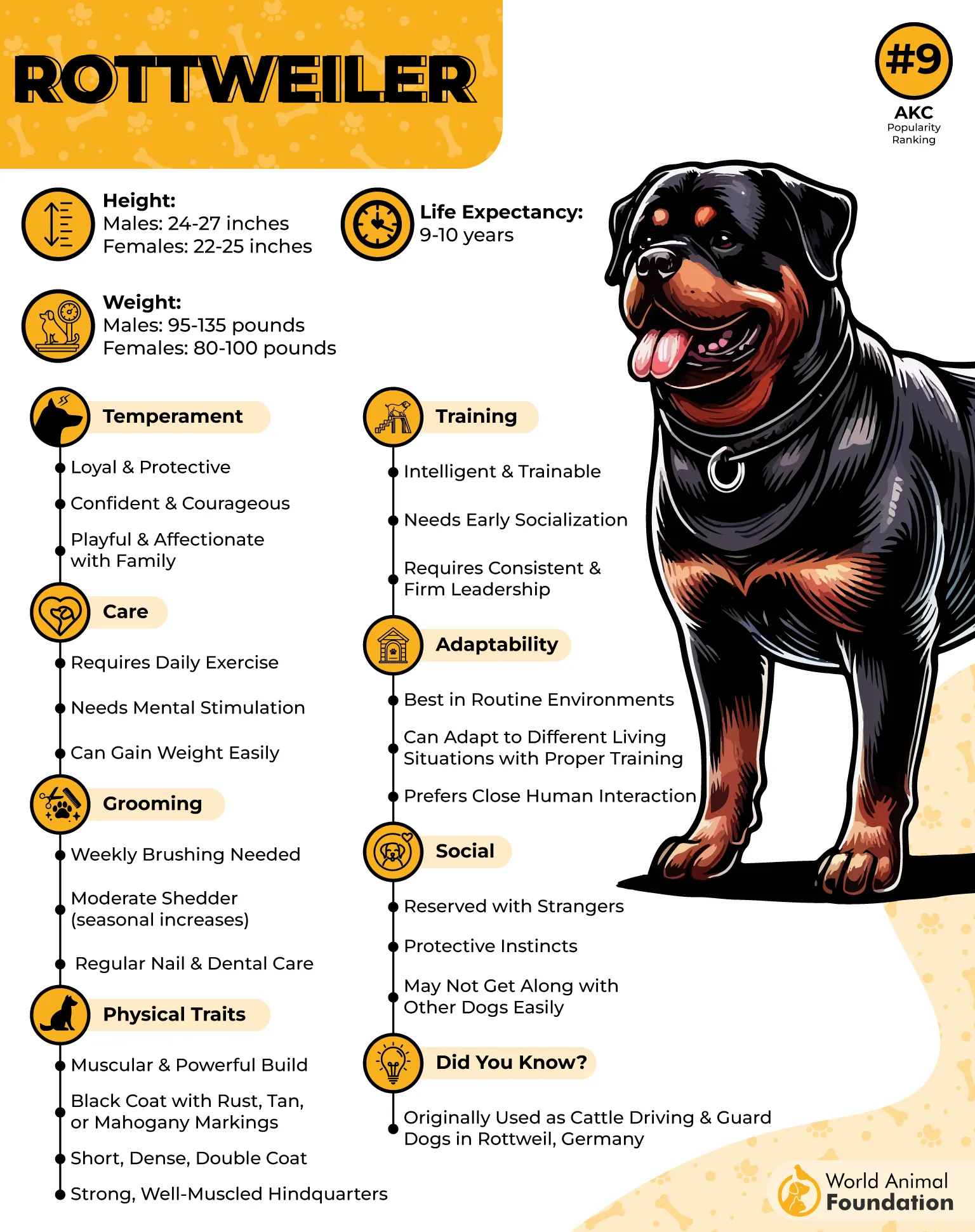
When properly trained, they’re affectionate with their families and can coexist peacefully with other dogs. However, their natural guarding instincts mean they may be wary of strangers. Early socialization is key to ensuring they interact well with other animals and people alike as Petplan stated.
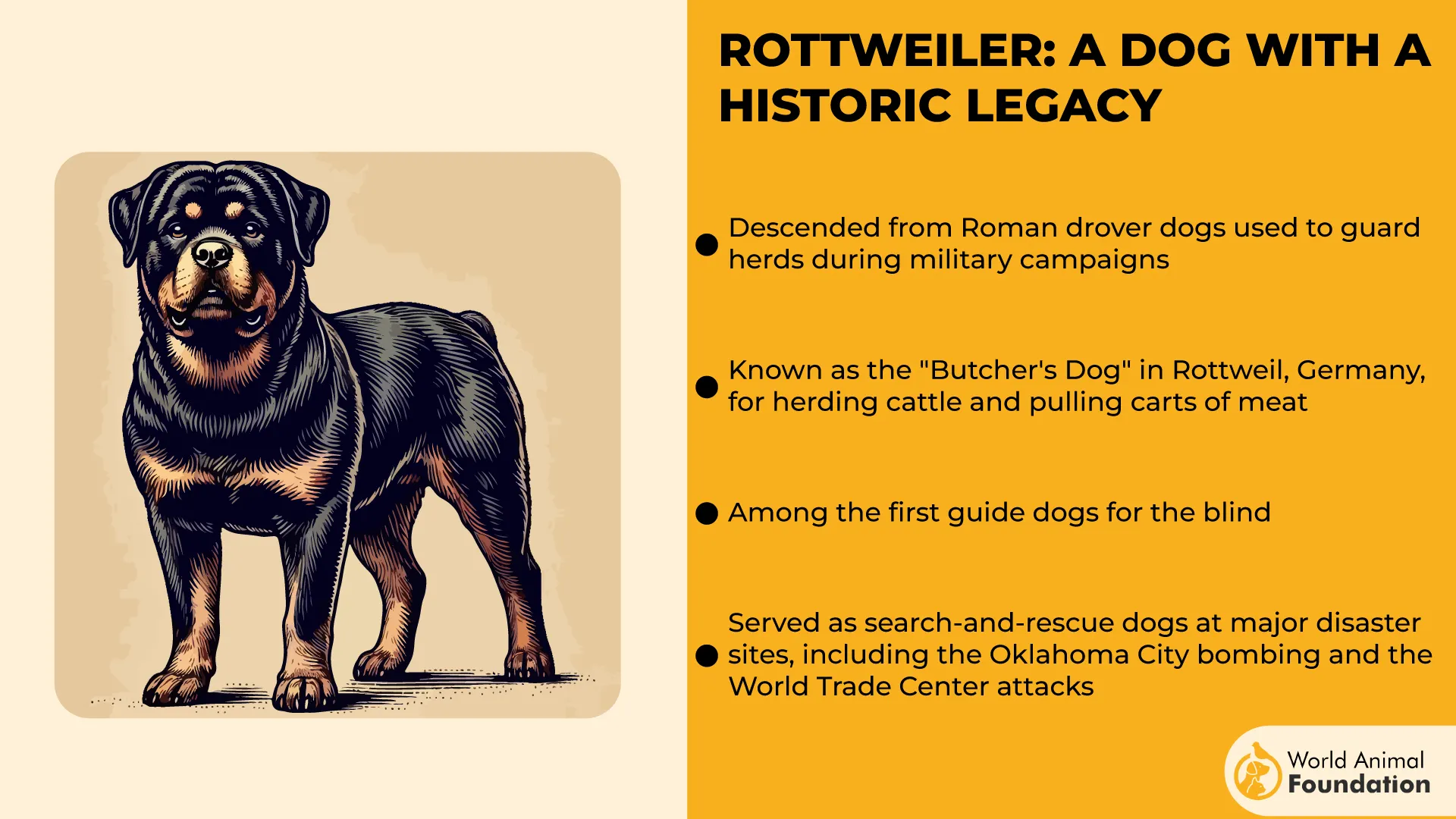
Concerns over fatal attacks have led to bans in certain areas. Some regions enforce strict ownership rules, requiring proof of rabies vaccination and additional safety measures. Local governments regulate these laws in an attempt to balance public safety with responsible pet ownership.
Advocates argue that targeting breeds instead of bad owners is unfair. Others believe these restrictions help with disease control and reduce risks in communities. The debate continues, but one thing is clear—when raised with love and structure, Rottweilers can be loyal and gentle companions.
6. Doberman Pinscher
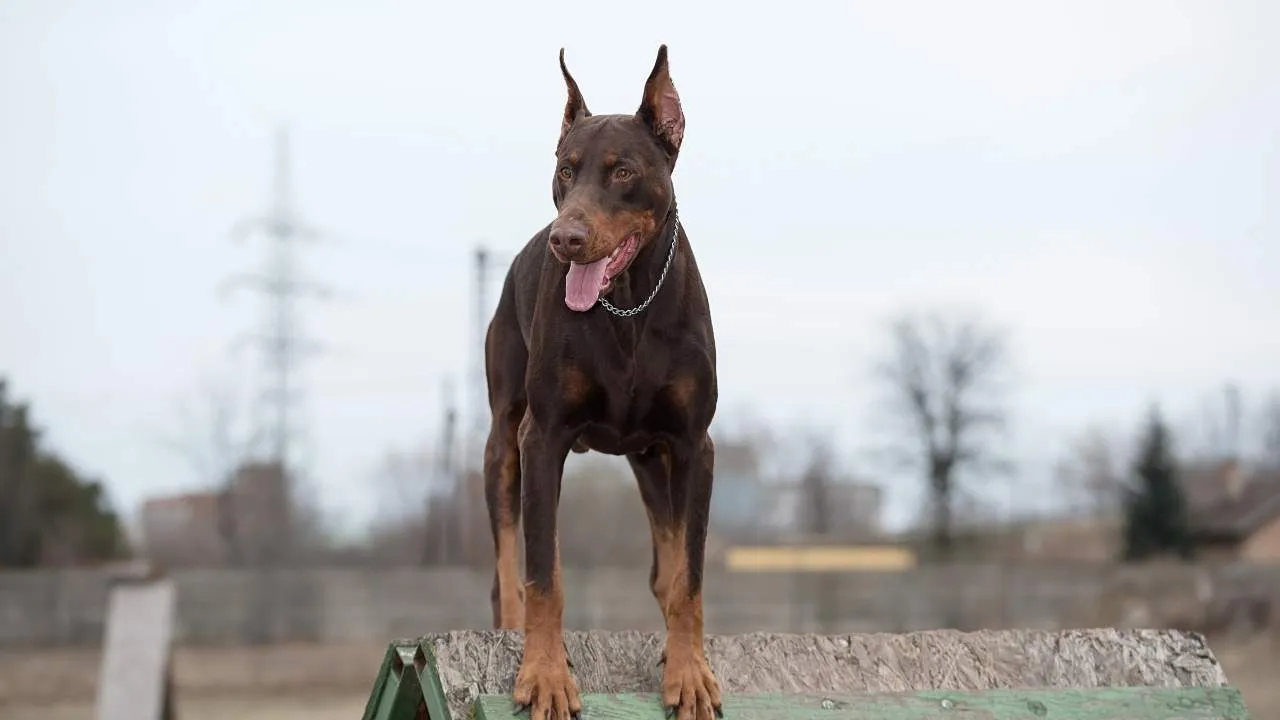
The Doberman Pinscher was created in the late 19th century by a German tax collector who needed a fearless yet loyal protector. With a mix of Rottweiler, Greyhound, and Weimaraner in their lineage, these dogs quickly gained a reputation for their intelligence and sharp instincts.
Sleek, muscular, and built for speed, Dobermans are the definition of athleticism. Their deep chests, long legs, and signature cropped ears give them a striking appearance. But don’t be fooled by their serious look—underneath that tough exterior is a dog that just wants to stick by its owner’s side.

Loyal to a fault, they form strong bonds with their families and are always ready to defend them. While they may seem intense, a well-trained Doberman can be affectionate, playful, and surprisingly goofy. That said, their protective nature means they aren’t the type to roll out the welcome mat for strangers.
Their imposing presence has led to outright bans in certain regions, with state laws restricting ownership due to concerns over aggression. While there are no breed bans at the federal level, some areas enforce strict rules, making it difficult for people to adopt them without meeting specific requirements.
Critics argue that such legislation unfairly targets the breed rather than bad training. Others believe restrictions help prevent irresponsible ownership. Love them or fear them, there’s no denying that a well-raised Doberman is as loyal as they come.
7. Akita

Bred in Japan, the Akita was once a noble guardian of royalty and a fearless hunting companion. With a history steeped in tradition, this powerful breed has long been a symbol of loyalty and strength in its home country and beyond.
Stocky yet graceful, Akitas have a thick double coat, curled tail, and an imposing stance. Their sturdy build and broad head give them a striking appearance, making them look both majestic and intimidating at the same time.
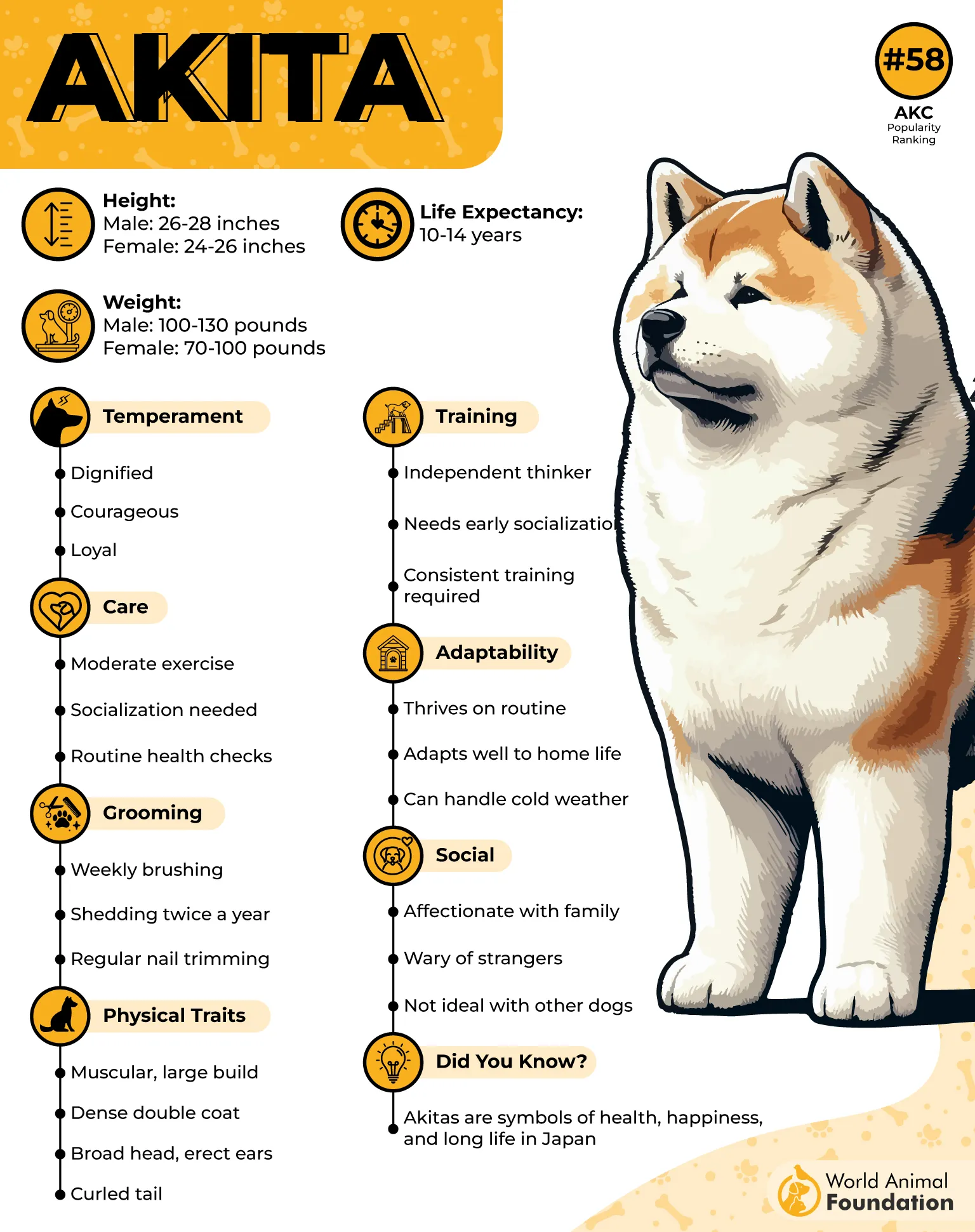
Independent and strong-willed, Akitas form deep bonds with their families but tend to be aloof with strangers. Their protective instincts and dominant nature mean they require firm training, as they aren’t always eager to make friends—whether with people or other pets.
Due to concerns over aggression, they aren’t permitted in certain regions, with ownership restrictions varying from place to place. Strict policy measures in some areas require special permits or training to own one legally.
Supporters argue that responsible ownership negates the need for bans, while critics believe regulations are necessary for safety. Whether adored or restricted, the Akita remains a fascinating and formidable breed.
8. Rhodesian Ridgeback

Originally bred to track lions in Africa, the Rhodesian Ridgeback is as fearless as they come. This breed carries a rich history of adventure, resilience, and an uncanny ability to stand its ground, making it a legendary companion for hunters and explorers alike.
With a sleek, muscular build and a signature ridge of hair running down its back, this dog looks like it walked straight out of an action movie. Agile and powerful, Ridgebacks are built for endurance, capable of covering vast distances without breaking a sweat.
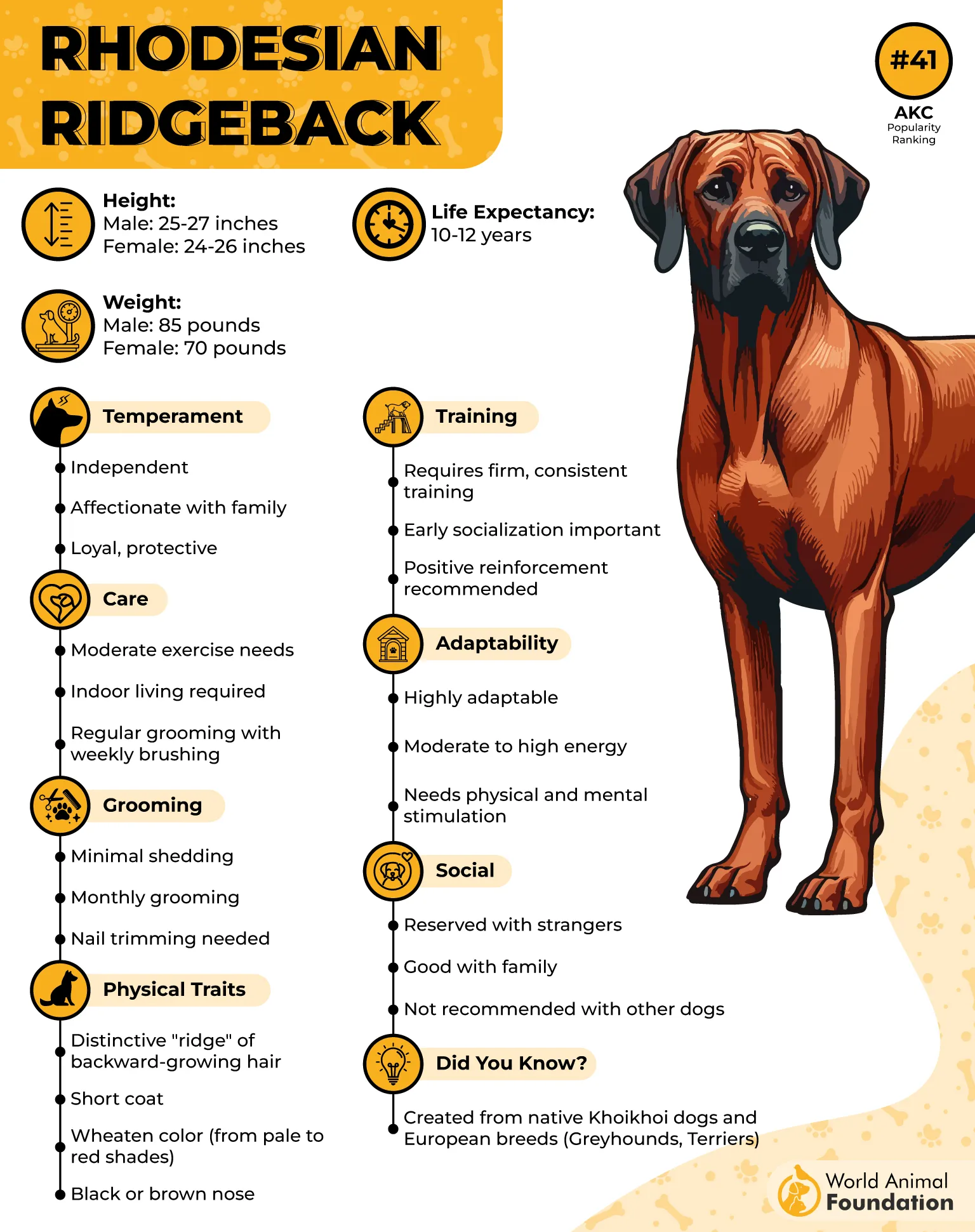
Despite their imposing presence, they’re loyal, affectionate, and surprisingly gentle with their families. However, their independent streak and strong prey drive mean they aren’t exactly eager to take orders—training one requires patience and a good sense of humor.
Some regions have placed restrictions on Ridgebacks due to concerns over their hunting instincts and strong-willed nature. While not commonly banned, their fearless temperament has sparked debates in areas with strict dog regulations.
Fans of the breed argue that Ridgebacks are misunderstood, while skeptics believe their protective instincts can pose challenges. Love them or question them, one thing’s for sure—this is a breed that commands respect.
9. Siberian Husky

The Siberian Husky is the ultimate adventurer, originally bred by the Chukchi people of Siberia to pull sleds across frozen landscapes. Known for their endurance and speed, these dogs played a crucial role in Arctic survival, proving that brains and brawn make a winning combination.
With their striking blue or multi-colored eyes, thick fur, and wolf-like stance, Huskies turn heads wherever they go. But don’t let their beauty fool you—these escape artists are notorious for finding ways out of even the most secure yards.
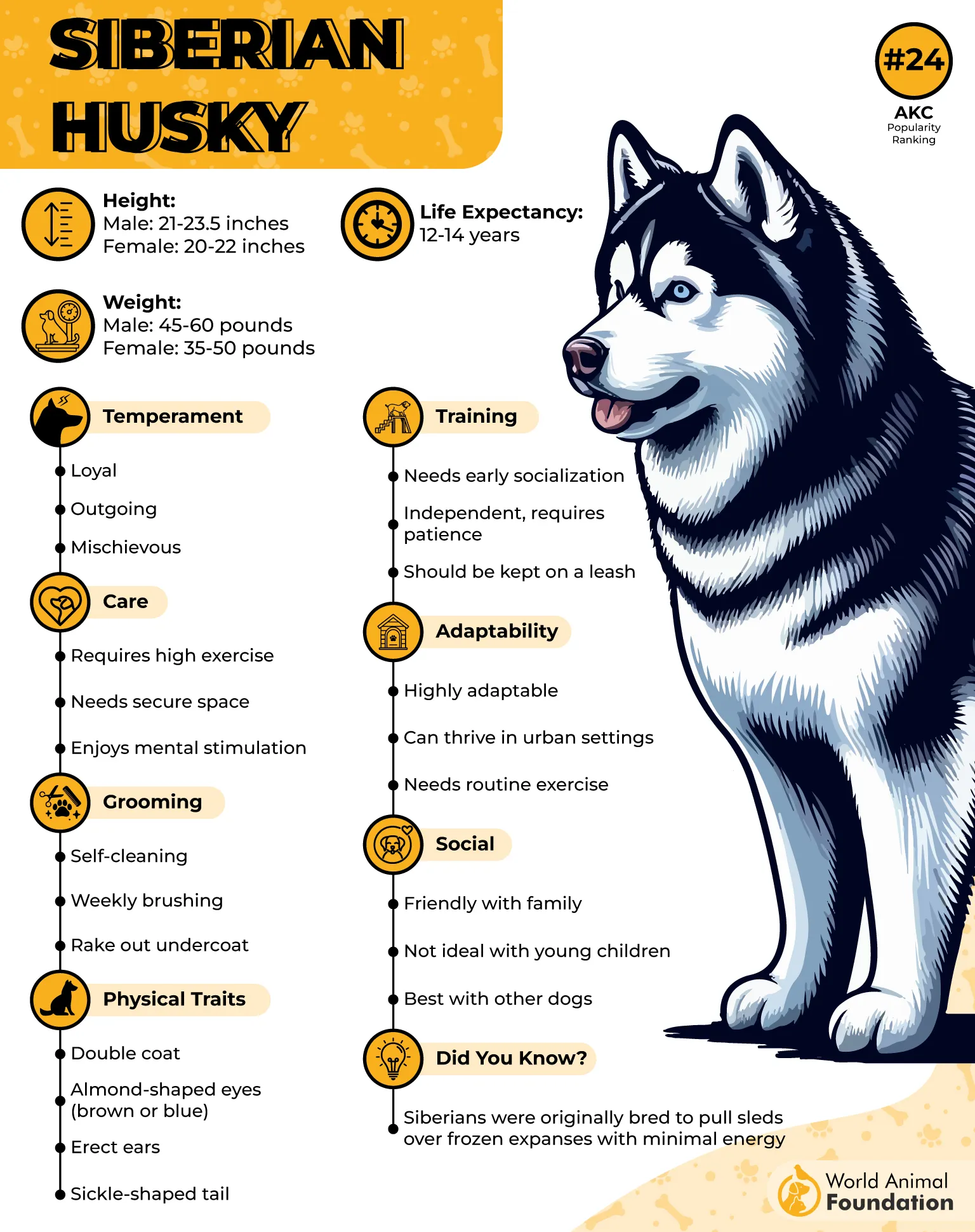
Huskies are social, mischievous, and full of energy. They love to “talk” with their signature howls and are always up for playtime. However, their independent streak means they’re not always eager to please, making training a test of patience.
Some areas have placed restrictions on Huskies, often lumping them in with larger, more aggressive breeds. While they’re generally friendly, their strong prey drive and stubbornness have raised concerns about their suitability in all households.
Fans argue that with the right training, exercise, and love, Huskies make fantastic companions. Detractors, however, worry that their high-energy nature isn’t for everyone. One thing’s for sure—owning a Husky means life is never boring!
Conclusion
The debate over breed bans remains complex, with supporters citing safety concerns and critics arguing against unfair restrictions. While some believe that American Pit Bull Terriers and other breeds pose risks, responsible ownership plays a crucial role in preventing incidents.
Laws vary from state to state, making it challenging for owners of mixed-breed dogs to navigate restrictions. In some regions, even lesser-known breeds like the Canary Dog face bans due to their historical roles as guard dogs.
Despite their intelligence and loyalty, breeds like German Shepherds often fall under scrutiny. The key issue isn’t just the breed itself but how well the dog is trained, socialized, and cared for by its owner.
Advocates for lifting bans argue that Pit Bull ownership shouldn’t be dictated by broad regulations. Organizations like the American Kennel Club emphasize responsible pet ownership rather than breed-based laws.
From the Old Country Bulldog to the Brazilian Mastiff, every breed has its strengths and challenges. Instead of outright bans, focusing on education, responsible breeding, and proper training could create safer communities for both dogs and humans.


